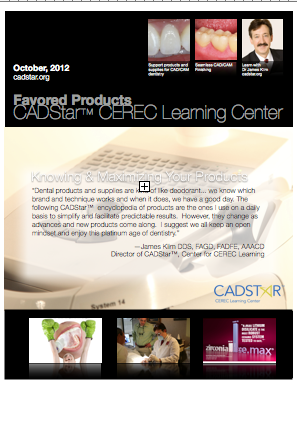- Message Center
- Message Center
Submitted by James Klim DDS, CADStar host on 01/24/2013 - 9:38pm
Submitted by James Klim DDS, CADStar host on 01/20/2013 - 10:56am
Assists in color matching CEREC restorations. Use the pre-modeled stump shades and restorations to predict final color. Choose the stump shade, place the different crowns on top and choose the shade that best matches the patients existing color. Link www.cadstar.org/products
Submitted by James Klim DDS, CADStar host on 10/08/2012 - 10:27pm
Great products provide a smoother clinical environment. I have updated my favored products and can be obtained in the download section of this website. Click here for link
Submitted by James Klim DDS, CADStar host on 09/10/2012 - 10:21pm
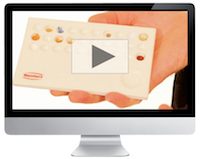 Mixing palette for stains and glazes with transparent sealed cover to prevent drying out and maintaining contents fresh for continual use. Great way to speed up the stain and glaze process. Retrieving stains and glazes is simplified with enough holding wells for multiple stain and glaze systems. View Video
Mixing palette for stains and glazes with transparent sealed cover to prevent drying out and maintaining contents fresh for continual use. Great way to speed up the stain and glaze process. Retrieving stains and glazes is simplified with enough holding wells for multiple stain and glaze systems. View Video
Submitted by James Klim DDS, CADStar host on 08/24/2012 - 12:17pm
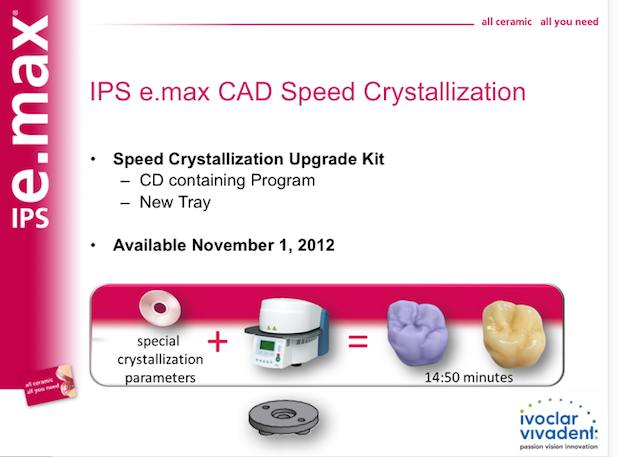
The historical recommnended 19 min 50 sec e.max speed crystallization fire time is the one that I have been using. There has been a shorter one being pushed that is under 13 min.
The research conclusion of the under 13 min protocol is now being documented. Two primary issues, less than full crystallization shift from the metasilicate to the disilicate leading to more opaque ceramic and rougher surface finish. Will this be a significant ceramic
Submitted by James Klim DDS, CADStar host on 05/08/2012 - 8:19pm
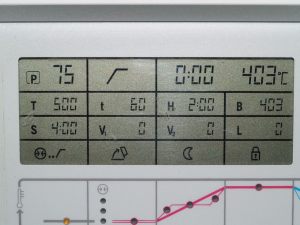
Recently, several doctors have asked the following question:
“I had a crown de-bond, the patient has the crown but it has resin cement still bonded to the inside of the crown, what do I do to remove it?” The simplest solution is to place the crown on a honey comb tray and fire in a furnace for about 5 minutes. Resin will burn off during this
Submitted by James Klim DDS, CADStar host on 05/01/2012 - 9:30pm
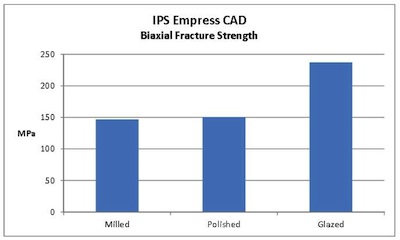 IPS Empress CAD is leucite glass ceramic offering three translucencies (Low, High, and Multi) that offer excellent esthetics to compliment high strength and over 20 years of clinical success in press and CAD/CAM technology. A feature of Empress CAD is the increase in fracture strength when glaze firing the final restoration. The chart below shows the fracture strength of Empress CAD when milled, milled & polished, and milled & glaze fired. A glazed
IPS Empress CAD is leucite glass ceramic offering three translucencies (Low, High, and Multi) that offer excellent esthetics to compliment high strength and over 20 years of clinical success in press and CAD/CAM technology. A feature of Empress CAD is the increase in fracture strength when glaze firing the final restoration. The chart below shows the fracture strength of Empress CAD when milled, milled & polished, and milled & glaze fired. A glazed
Submitted by James Klim DDS, CADStar host on 04/24/2012 - 10:04pm
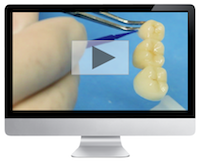 The quality of mill and fit using the CEREC 4.0 bridge application is outstanding. I use this approach when the clinical demands require a longer lasting bridge than a 2-3 week turnaround time. This tutorial video in chapter 4 will review the finishing steps I take once the bridge is out of the milling unit.
The quality of mill and fit using the CEREC 4.0 bridge application is outstanding. I use this approach when the clinical demands require a longer lasting bridge than a 2-3 week turnaround time. This tutorial video in chapter 4 will review the finishing steps I take once the bridge is out of the milling unit.
Submitted by James Klim DDS, CADStar host on 04/23/2012 - 7:59pm
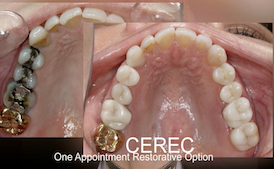 Cleaning an IPS e.max CAD restoration removes lubricating oil used during the milling process. While oil is needed to cool the cutting tools and ceramic, oil incorporated on the prep may affect the bonding process or remaining on the crown may affect the the glaze. When removing the crown from the mill and if it is tried in immediately, oil may be introduced to the prep which may negatively affect the bonding process. If utilizing a
Cleaning an IPS e.max CAD restoration removes lubricating oil used during the milling process. While oil is needed to cool the cutting tools and ceramic, oil incorporated on the prep may affect the bonding process or remaining on the crown may affect the the glaze. When removing the crown from the mill and if it is tried in immediately, oil may be introduced to the prep which may negatively affect the bonding process. If utilizing a
Submitted by James Klim DDS, CADStar host on 02/19/2012 - 8:20pm
 Following several months of using 3M LAVA Ultimate, I would like to share my preferred applications for this restorative material. View Video
Following several months of using 3M LAVA Ultimate, I would like to share my preferred applications for this restorative material. View Video


